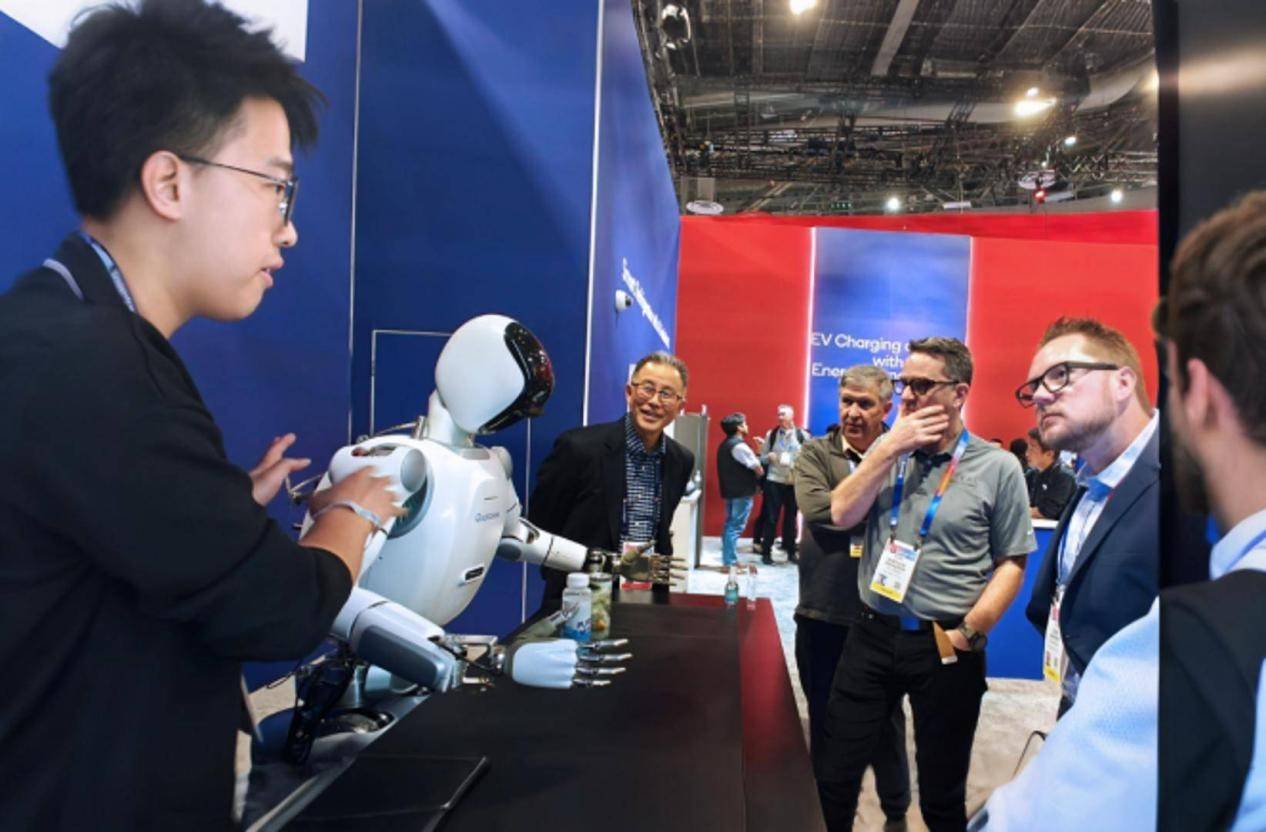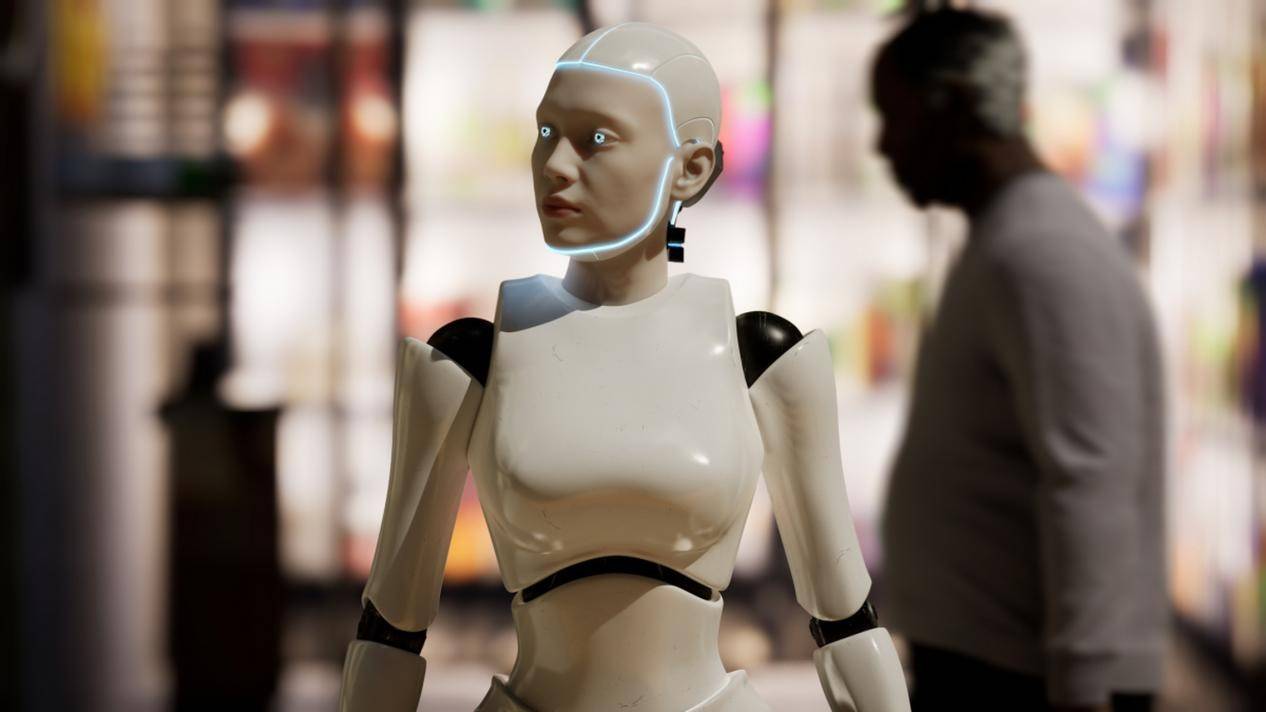Humanoid Robots: Avoiding the Smart Speaker Pitfalls
![]() 02/07 2025
02/07 2025
![]() 547
547

As the new year dawned, industries such as cultural tourism, retail, and securities experienced notable declines, yet humanoid robots continued their upward trajectory against market trends, stirring considerable interest.
On January 14, robot-related stocks surged, with over 20 stocks, including Sanhua Intelligent Controls, Hanwei Technology, Hongxun Technology, Dongfang Jinggong, ASD, Wuzhou Xinchun, and Juneng, hitting their daily limits. Other stocks, such as Efort and HanYu Group, recorded gains exceeding 10%. This capital market enthusiasm aligns with the recent CES exhibition, where hundreds of tech companies showcased innovative products, particularly Chinese robot firms that stole the show.
Amidst this accolade, UBTECH, the first publicly traded humanoid robot company, saw its share price dip, appearing somewhat out of sync. Early in the year, it experienced significant share reductions from major shareholders like Tencent Holdings. Subsequently, news emerged that UBTECH's core management team had reduced their holdings post-lock-up period, sparking heated discussions.
Humanoid robots have caught the wave, igniting public imagination about the future. This scene inevitably evokes memories of smart speakers, which also rode the AI wave and were embraced by internet giants, surging rapidly. However, the current smart speaker industry is on a downward trajectory, "alive but as good as dead." Will humanoid robots suffer the same fate?
The "intelligent" pie is not easily baked.
In 2024, when most consumer electronics products in the domestic retail market experienced a significant recovery, the smart speaker market continued its decline for over ten quarters. According to RDI's report, in the first half of 2024, China's smart speaker sales amounted to 8.055 million units, a year-on-year decrease of 29.8%, with market sales of RMB 2.17 billion, a year-on-year decrease of 33.8%.
From a rapid emergence to sudden silence and decline, the smart speaker market changed direction within just a few years. Speaking of reasons, the most intuitive lies in the product itself. After tech giants painted grand visions for smart speakers, raising consumer expectations to the fullest, the "artificially dumb" experience left consumers deeply disappointed, gradually eroding their hope in smart speakers.
Smart homes were the grandest vision painted by internet giants. Since Amazon pioneered the smart speaker category, the industry envisioned a future where smart speakers would serve as the central hub of the smart home ecosystem, interconnecting and ushering family life into the realm of intelligence.
However, the more it was hyped, the more awkward it became.
Humanoid robots are not a new species. Boston Dynamics, a star in this industry, has been established for 32 years. The reason it suddenly became a hot pursuit of capital is that the wave of large models sweeping the globe has brought new imagination. Simply put, the emergence of large models, if able to introduce semantic understanding and reasoning generation capabilities, is equivalent to giving humanoid robots a new "brain."

At this CES exhibition, it was evident that humanoid robots could not only walk but also perform backflips in place; quadruped robot dogs ran swiftly and occasionally gave the audience a "heart sign"; robotic vacuum cleaners easily avoided obstacles and had "hands" to directly "grab" objects. It must be said that robots' capabilities have significantly evolved and upgraded.
However, this doesn't seem to be a demonstration of intelligence; it's more like a "skill show." For example, Zhuji Power showcased its robot's ability to quickly stabilize after being kicked at the World Robot Conference, while Xingdong Jiyuan presented a video of its robot climbing the Great Wall. Other robots also tended to focus on various "talent shows." But beyond the surprise of robots' mobility, have humanoid robots truly become intelligent?
Various on-site mishaps have already highlighted certain issues. For instance, in a sorting scenario, the exhibited robot could only grab double-sided tape within a specific range, unable to grab scissors or tape measures, and moved very slowly. Another robot demonstrating cooking had an accident where the dish was poured onto the table.
Therefore, the dexterity and intelligence captured and displayed in videos are essentially performances under a "laboratory environment."
Many players, but danger lurks behind the hustle and bustle.
Currently, a feast has formed around humanoid robots, with giants announcing their entry, startups emerging, and investment institutions frantically searching for unicorns. According to incomplete statistics, from January to October 2024, there were 69 financing events in the global humanoid robot industry, with a total disclosed financing amount exceeding RMB 11 billion. Among them, several large financing events in China exceeded RMB 100 million.
Slightly different from the past, in this new wave, automotive companies have entered one after another, making the humanoid robot racetrack even more lively. Currently, BYD, GAC Group, Chery Automobile, Xiaomi, Thalys, XPeng Motors, SAIC Motor, Changan Automobile, and Dongfeng Motor have all ventured into the field of humanoid robots.

This scene surpasses that of once-popular smart speakers. Initially, internet giants firmly believed that smart speakers were the next generation of intelligent hardware that could bring new changes after smartphones and tablets. Therefore, giants such as Google, Apple, Xiaomi, Baidu, Alibaba, and Huawei scrambled to release products, quickly igniting the smart speaker market.
However, this great melee did not guide the smart speaker industry onto the "right path."
Since giants have successively entered the smart speaker market, considering it a priority entry point for smart home layouts, the price war for smart speakers began. Long-term price competition caused small companies to withdraw early due to inability to compete, while large factories generally incurred losses. More critically, under the pressure of price wars, manufacturers struggled to make money, resorting to the tactic of "losing money on hardware, making money on services." This led to a worse user experience with smart speakers due to insufficient intelligence.
Now, the humanoid robot racetrack is also about to enter a melee of giants, with more and more automotive companies, technology enterprises, internet companies, and traditional home appliance enterprises entering the field.
Price reductions have become a recent trend. First, domestic robot company Unitree Technology launched its second-generation humanoid robot G1 with a starting price of only RMB 99,000, causing a sensation in the industry. Subsequently, Zhongqing Robotics launched its humanoid robot PM01 with a price of only RMB 88,000, continuing to fuel the price reduction trend.
Tesla also made another "promise," stating that Optimus is expected to begin mass production in 2026, with a final selling price that could be as low as USD 20,000.
Of course, the reduction in the price of humanoid robots is inevitable in the market. Under the pressure of high costs, one of the major obstacles to humanoid robots entering the market is their high pricing. Only by being affordable can they attract more buyers. However, before costs are significantly reduced, this pricing strategy raises questions about whether it means sacrificing product performance and quality, raising doubts from the outside world.
For example, Unitree Technology's G1 humanoid robot, priced from RMB 99,000, is considered by outsiders to have a low degree of freedom and does not come standard with a motion control system and algorithms. Another bionic robot enterprise, EX Robotics, claims that the company has achieved mass production and profitability of robots, with shipments reaching around 500 units. However, its products mainly focus on bionics exterior, and it is unclear how dynamic or athletic they are.
An industry insider said that currently, bipedal (humanoid) robots are "very competitive," with intensifying competition. Some manufacturers are already engaging in "price wars," with some even quoting prices as low as RMB 39,800, willing to "lose money" just to "make a noise."
Once an unorderly price war begins, it may mislead the industry, and if giants join in, the price war will become even more brutal. Besides, a more inevitable fact is that capital coerces enterprises, and the contradiction between long-term investment in research and development and the delay in commercialization is prone to erupt. The recent turmoil at UBTECH has already proven this point.
Are humanoid robots, after all, a "premature" product?
The opportunity for the explosion of humanoid robots is quite similar to that of smart speakers.
Around 2017, the rapid development and improvement of speech recognition technology became one of the few bright spots in the field of artificial intelligence, with many technology giants rushing to occupy this technology. At that time, the relatively niche smart speaker provided an excellent option for intelligent voice technology, which urgently needed to find a landing carrier. Similarly, humanoid robots also provide an excellent landing platform for AI large models, which have slowed down and become somewhat lost.
Nowadays, embodied intelligence is regarded as the next stage of AI large model development, and humanoid robots, which already have an industrial foundation, are the first to be favored.

The emergence of technological waves has indeed created opportunities for new developments in intelligent hardware. However, whether it's smart speakers or humanoid robots, they suddenly formed a trend, seemingly more like being coerced to stand on stage and tell new stories. In these new stories, people discuss humanoid robots more optimistically, not because they have the conditions for industrial explosion, but because they are easier to discuss in terms of landing, application, and commercialization prospects compared to large models.
The decline of smart speakers has already confirmed the outcome of a product that is not technologically mature but quickly enters the market. Nowadays, humanoid robots, with various conditions not yet mature, face even more growth challenges.
For example, mass production. Musk, who said last year that Optimus would achieve mass production by the end of 2024, recently tweeted that Tesla would produce humanoid robots in small batches next year, with the expectation of mass production and delivery to other corporate customers in 2026. This means the mass production plan has been delayed by almost a year, and it is still questionable whether the new timeline is just another pie painted by Musk.
By the end of 2024, more and more humanoid robot enterprises began to announce "mass production," but the outside world is not optimistic about this. High manufacturing costs are a major obstacle to the mass production of humanoid robots.
It is understood that the manufacturing cost of Boston Dynamics' Atlas humanoid robot is as high as approximately USD 2 million, and Tesla's meticulously crafted Optimus robot hovers at a high manufacturing cost of around USD 100,000. According to a report released by Macquarie Research in 2023, the total hardware cost of humanoid robots is currently about USD 50,000.
While manufacturing costs have not been significantly reduced, robot companies are rushing to "flex their muscles" with mass production announcements. The crux is that pricing in the domestic robot market has already become competitive. Under such circumstances, products quickly pushed to the market are likely to be immature "experimental products" that compromise on costs. Just like the initially unintelligent smart speakers, they were packaged and hyped with various concepts, attracting much attention but eventually fading into obscurity.
Humanoid robots are not only far from mass production but also seem to be even farther from intelligence. What the market needs are not a bunch of "physically strong but mentally simple" humanoid robots but smarter ones.
But this will obviously take longer.
Dao Zong You Li, formerly known as Waidaodao, is a new media outlet in the internet and technology circle. This article is original, and any form of reprinting without retaining the author's relevant information is prohibited.





